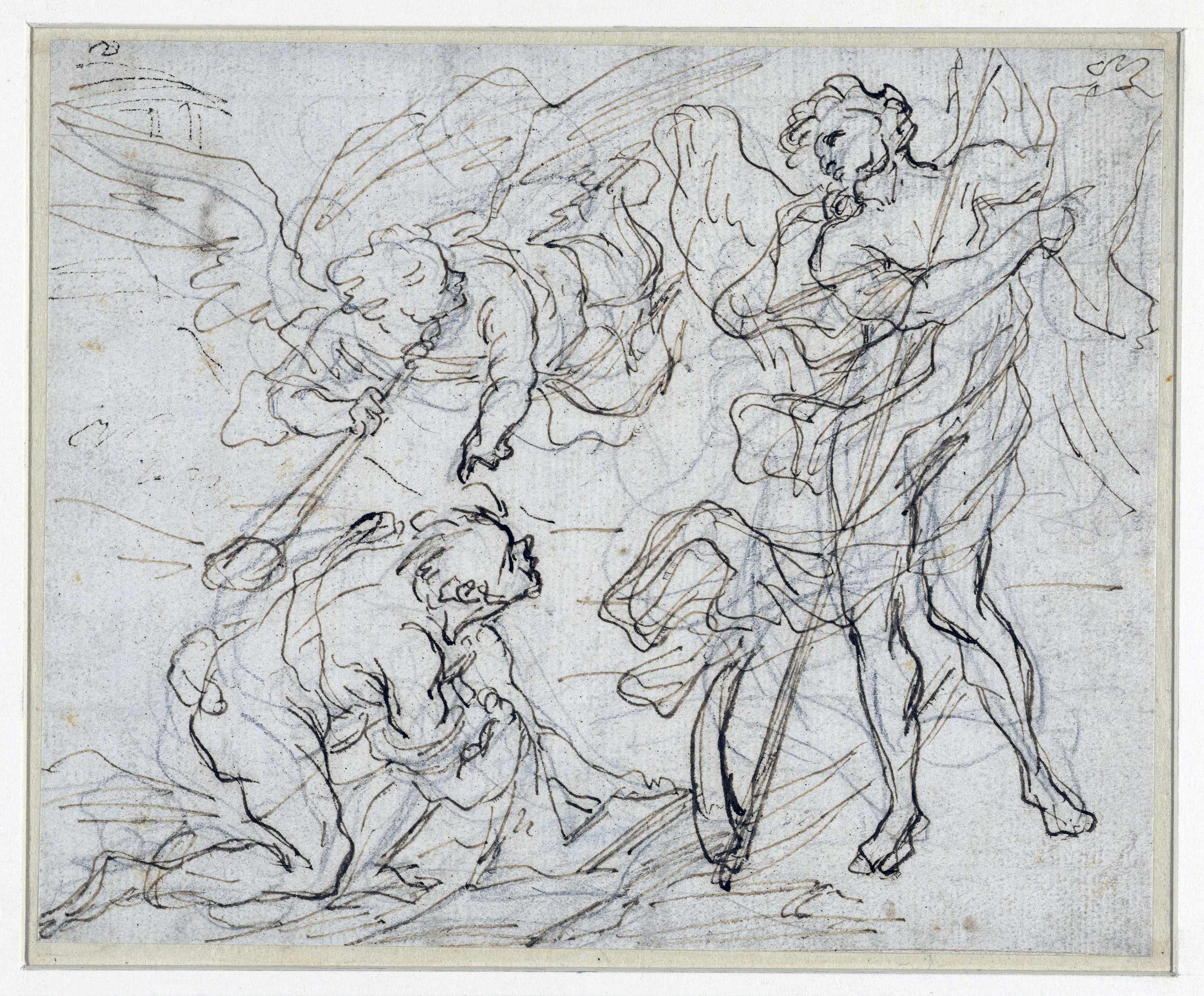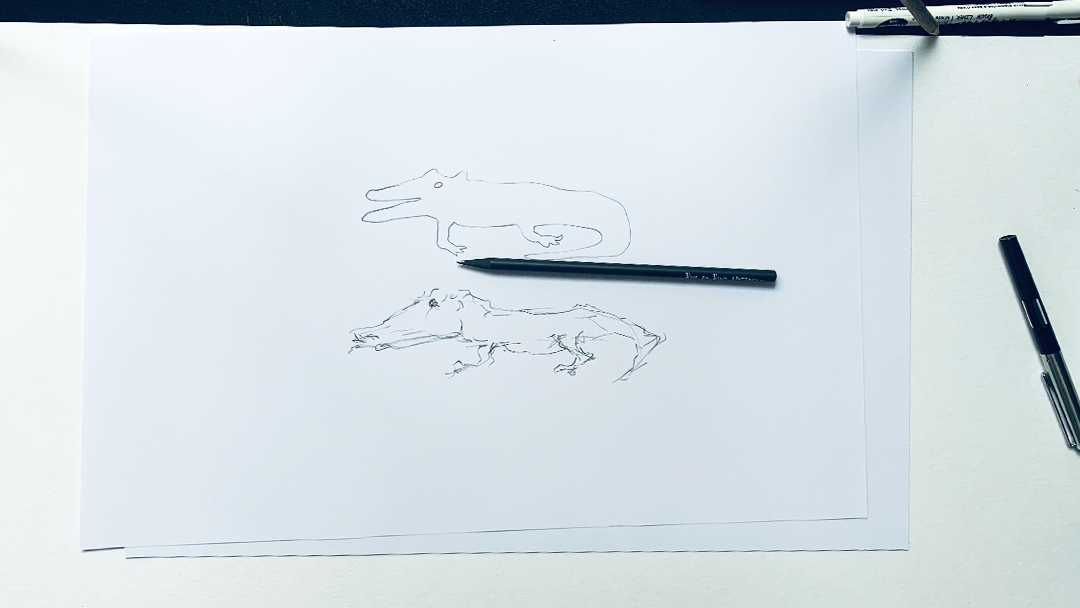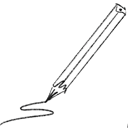Rule 2 | Work with line bundles
Lesson 1 | How to work with line bundles?
20 min.
Sometimes we need to search for the right form, and for this we use the bundles of lines.
Step 1 | Learn from the masters
Focus on a very detail in the picture below. Follow the line of a leg or even try to copy the several lines that take part in this leg. You will find out that there are much more lines than you might think of.
The backstory
Here we have a sketch from the 18th century. The artist was obviously looking for the right form of his idea. The work is called „The Time“. On the reverse side, there is the text: Een man knielend voor Tijd, boven zweeft een engel met een bazuin
A man kneeling in front of Time, an angel floating above with a trumpet.
What the artist wants to depict are the forerunners of the biblical apocalypse – the seven trumpets of the Last Judgment, and the trumpets of Jericho. This is what it says in the Revelation of John.
Enormous material! Something for which we have no imagery. These images must first be developed by artists. That is why he makes use of the many lines he scatters out and so captures the image he is looking for. For his pictorial memory will give him the proper form, that is, the form that he can extract from the previous one. The wrong lines recede as we gradually see feet, legs, and even whole bodies more and more clearly. By the way: this kind of imaginative ability can be trained. The more pictures you have in your memory the easier it is. That is, by the way, the reason why art connoisseurs like more and more fanciful art. They have simply made their imagination rich by looking at pictures. This makes it easier for them to see much more in the pictures.
Further images dealing with the topic of father time …

Step 2 | The old masters did it - we do it - everyone does it
We all work with more than one line, we work with line bundles. Watch the video to see what it means to work with line bundles. We start with the idea of an object, simple as a crocodile.
Script
Hello and happy sketching. We are going to work with line bundles. This is the second rule.
We are going to learn why and how we work with line bundles. When I draw something just with one line, you will easily find out this is a crocodile. But is it actually a crocodile? Is it compelling? Is it nice? Or isn’t it at all what we need? Because it’s a little bit childish. So we actually want to do something else. But what are we going to do when we have just one line, we only have one dimension, and one dimension that’s not enough, three-dimensionalbecause actually we want a three-dimensional object with height, width, and depth. And that’s why we need more than one line. So when we are going to develop an object in the form, we are going to draw something like more lines, many lines that go along the form to find the real form of a real object, that we actually do not know how it looks in all the details. But we are going to trigger an image with the many lines of your inner repository of images because you all have seen somewhere a crocodile, … Great nostrils, big mouths, sharp teeth, and even those lines that are not at all in accuracy to a real crocodile, but you can trigger the image of your inner images. So what we are going to do with the multiple lines, we are going to give some free space for your variety of images, so that you can compare your inner images with what is there in the sketch.
But not only this, we can even do with more than one line, so with many lines, we can do something like texture … . And you can see whenever I’m drawing, I’m drawing with many lines and bundles. I do not know how is the detail of this shoulder here, how does it go over from head to shoulder with a crocodile? But well, I have to find some crocodiles to learn about the anatomy of the crocodile. But later on, when I have many lines, even wrong lines, then I can develop the drawing or the accuracy of the object. I can draw the accuracy of the object to a real object. And that’s why we are going to use more than one line.
Okay, go and google some crocodiles and try to work with line bundles. So not doing this, but doing something similar with many lines so that we can find out about what a crocodile could look like, even if you have just a few lines, many lines, so first, all lines are fluttering for sure, always, but then you are going to work with those lines. And this gives the impression of a real object and helps your brain to find the inner image of his own crocodile. Okay? Happy sketching.
ASSIGNMENT | Sketch your crocodile after having seen some pictures of crocodiles.
Never forget to feed your brain. Otherwise, you will never have inner images to lean upon.

Free trial
Try one lesson and decide if you want to do the whole course. Click for the free trial ...
Certificate
If you want to achieve a certificate that proves your sketching skills, get all your information here ...


